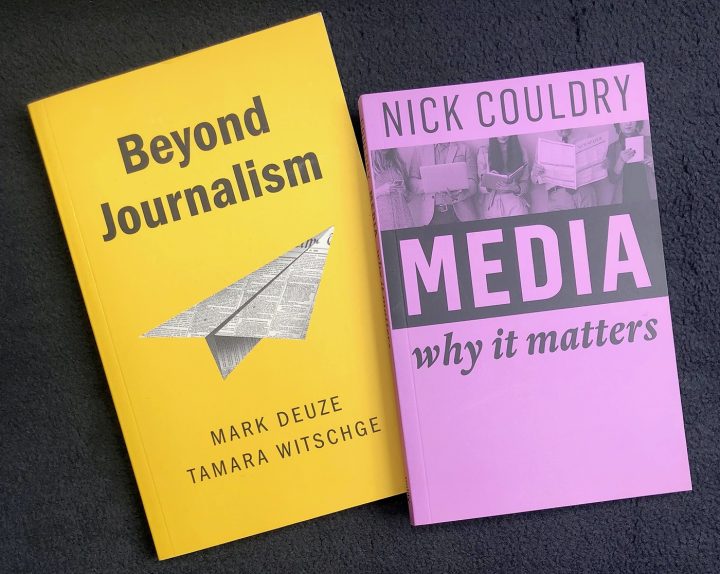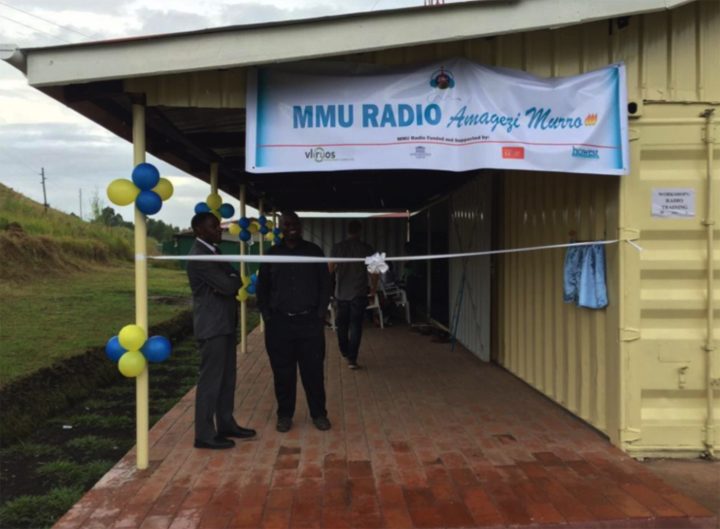
Love the media. Hate the media. Depend on the media — especially so-called mainstream outlets that gather and deliver “hard news” about politics, the economy and business, foreign affairs, health, and education. In the United States, they include such “legacy” outlets as the New York Times, the Wall Street Journal, the news divisions of the broadcast-TV networks, and news services like the Associated Press.
However, for a myriad of reasons, most notably the proliferation of new sources across the internet, and the consequent decline of high-priced, profitable advertising, some older mainstream media are in trouble and struggling to survive. Throw in the consolidation of once-independent publications under the umbrellas of big, greedy media conglomerates; putting shareholders first, they have cut editorial staffs to the bone and farmed out as much work as possible to unsalaried freelancers — offering them no health insurance, pension plans, or hint of job security.
This is the disheartening backdrop against which Beyond Journalism, by the Dutch researchers Mark Deuze and Tamara Witschge, and Media: Why It Matters, by Nick Couldry, a British sociologist, have appeared. Together, these two compact books take the pulse of the media today.
Deuze and Witschge’s Beyond Journalism analyzes journalists’ aspirations, ethos, and survival efforts, while Couldry’s Media: Why It Matters assumes that what constitutes “the media” has expanded to now include anyone with an Instagram account or a Twitter feed as a de facto journalist.

Deuze and Witschge believe that journalism is inherently “a form of affective labor,” meaning that its character and procedures are influenced by its practitioners’ emotional relation to and engagement in their work.
They write that, today, “[t]he boundaries between journalism and other forms of public communication — public relations, marketing, and corporate communication online (via weblogs, videoblogs, and podcasts, or simply through posts on social media) — are porous and often meaningless, particularly for media users.”
Couldry’s ruminations focus more on the modes of dissemination by which the products of journalists’ efforts now reach the public — increasingly via a broad, diverse range of “information flows,” access to which, he argues, affect “whether contemporary societies are characterized by order or chaos” and even “what sort of social order is possible.”
For Couldry, “media” might refer, say, not only to a live television broadcast, but also to “your experience of chatting about it with friends via your mobile phone” even as you watch it. “[O]ur experience of media,” he writes, “spans everything from daily habits of media use to the social reality that is presented by media.” In effect, you are what you watch, listen to, post, share, or tweet. Anyone with a smartphone has become a deep-in-the-thick-of-it consumer-creator-transmitter in a vast, ever more multifaceted media ecosystem.
Couldry proposes that, “therefore, the challenge is to think about media as a dimension of how contemporary life as a whole is shaped; how today’s societies find their form.”

Traditionally, of course, the mainstream media collectively have controlled the narratives of current events, thereby helping to shape an audience’s sense of its history and identity, and in turn mold the ways in which it has addressed the challenges of its time. As Couldry puts it, in general, media serve as “infrastructures of connection.”
For experienced journalists who have lived through so many dramatic changes in their field, Deuze and Witschge’s catalogue of seemingly insurmountable woes can make for dispiriting reading. (Just this week, The New York Times reported that, in Britain, “[m]ore than 50 small and regional publications have temporarily suspended producing their print or online products,” and that “[h]undreds of journalists have been put on leave.”)
Still, Deuze and Witschge’s research over several years has shown that, despite financial and other uncertainties, many reporters, editors, photographers, producers, publishers, and other news-gathering professionals around the world remain committed to their work with a deep sense of purpose verging on missionary zeal. The authors and their research collaborators found that, for many of these workers, their profession provides a sense of independence, especially for freelancers, as they pursue subjects that keenly interest them.
Deuze, who worked as a freelance journalist in the past, is now a professor of media studies at the University of Amsterdam. Witschge, who comes from an academic background, is a professor at the University of Groningen and also at the Amsterdam University of Applied Sciences. Their book highlights numerous start-up media companies or organizations beyond the mainstream, “legacy” media, including such outfits as De Correspondent, an online magazine based in the Netherlands that features long-form articles; La Silla Vacía, an independent, online newspaper in Colombia; MMU Radio, a university-affiliated, community radio station in Uganda; and Zetland, an online magazine based in Denmark whose contributors have presented “live journalism” in theater settings.

“The dedication to the public that characterizes many of the start-ups in this study,” Deuze and Witschge write, “has been a remarkable (and laudable) feature.”
La Silla Vacía, to take one example, is a dynamic newspaper operation that has received funding from private foundations as well as the British Embassy in Colombia and USAID. Its founder-director, Juanita León, and other investors, who include some of her family members, own shares in the publication’s parent company, and all of its funding and ownership data are detailed on its website.
In fact, striving for transparency seems to be one of this news outlet’s driving principles. A section of its website titled “Quién es Quién” (“Who’s Who”) displays the names and photos of various government officials and other power holders in Colombia, with explanations of the personal connections between them; other special sections, supported by informative graphics, look in depth at such subjects as deforestation, women and power, and the details of the landmark 2016 agreement between Colombia’s government and the country’s FARC rebels.
La Silla Vacía appears to be an ambitious, independent news outfit that carries out investigative reporting and is motivated by a public-service ethos. It also seems to dare to speak truth to power. A reflection of Deuze and Witschge’s interest in what they call “the becoming of journalism,” La Silla Vacía is an example not of “what journalism is” but rather of “journalism as a moving object, as a process, as something that is continuously constituted as it is practiced.”

In Beyond Journalism, Deuze and Witschge have seized upon the exciting energy felt among journalists who are working beyond the confines of traditional newsrooms. In their remade and still unpredictably evolving field, freelancers can — and must — bring their expertise and, for what it’s worth, their own respective brands to an array of different, even competing publications, sometimes working in non-hierarchical teams and often taking on multiple, simultaneous roles as reporters, editors, and technical producers.
Most appreciatively, the authors focus on journalists as storytellers — often as deeply aspirational individuals whose own life stories inform how they approach their work. They note that they are interested in “the intention behind [the] work (responsibility and craftsmanship) rather than the outcome and functions of the work.”
Similarly, Couldry, as he told me via e-mail, is also interested in “smaller forms of media that exist outside the mainstream, and maybe challenge it, for example, community media,” many of which are web-based.
Looking ahead, he notes that, for non-mainstream media, the challenges “to being seen and heard remain as tough as ever, and there is a new danger of online space being increasingly colonized by right-wing extremist media.” Facts, truth, and the media that deliver them, he hinted, are becoming endangered species.
Love the media. Hate the media. Protect the media? These new books show that, in today’s complex, dynamic info-world, consumers have never been more empowered when it comes to choosing — and, to some degree, creating — the news they want.
Beyond Journalism (2020) by Mark Deuze and Tamara Witschge and Media: Why It Matters (2019) by Nick Couldry are published by Polity Press.
"Media" - Google News
May 09, 2020 at 11:08AM
https://ift.tt/35Ij6C8
The Media's Brave New World - Hyperallergic
"Media" - Google News
https://ift.tt/2ybSA8a
https://ift.tt/2WhuDnP
Bagikan Berita Ini















0 Response to "The Media's Brave New World - Hyperallergic"
Post a Comment